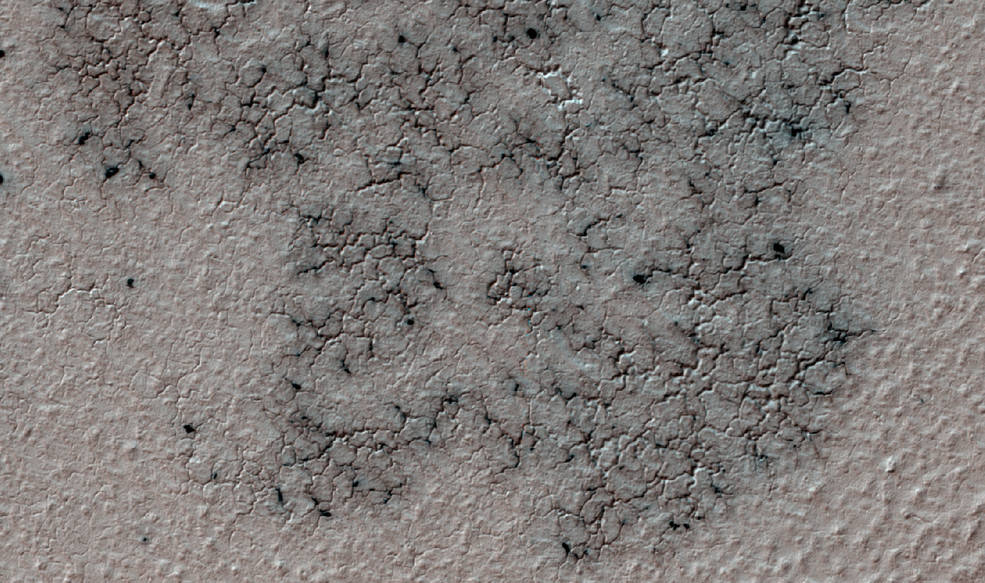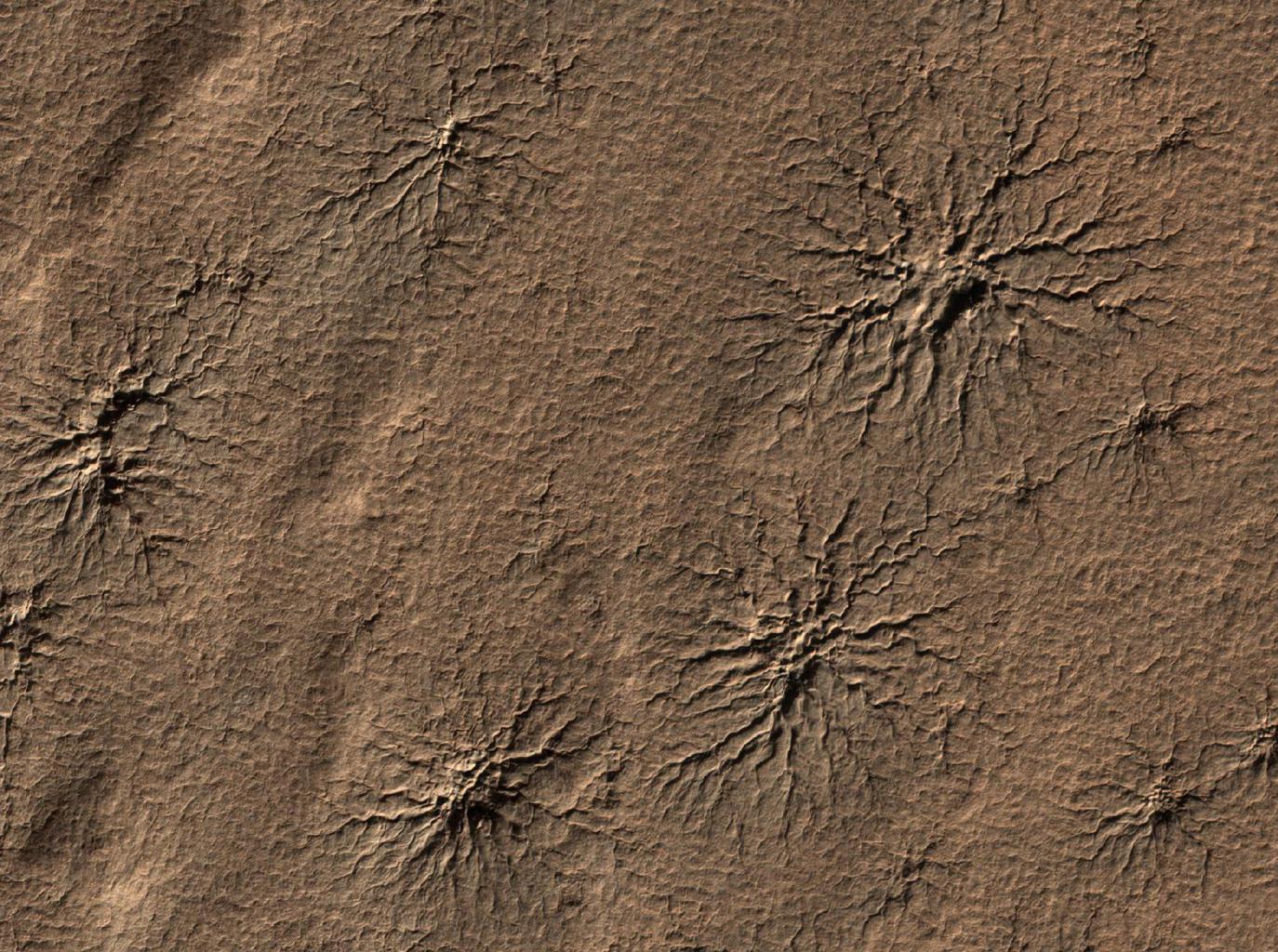Fans of astronomy helped scientists explore the "spiders" at the South Pole of Mars

This photo clearly shows the eroded surface of Mars at the South Pole. Snapshot taken by HiRiSE tool on September 12, 2016 (Source: NASA / JPL-Caltech / Univ. Of Arizona)
Thousands of enthusiasts are helping astronomers in the complex matter of studying the Solar System. It has now become known that, thanks to their efforts, objects that were interesting for science were found in many pictures of Mars. In particular, we are talking about seasonal changes in the structure of the polar cap of Mars at the South Pole, due to the melting of frozen carbon dioxide ("dry ice"). These formations are called " spiders " because of their peculiar form.
Sitting at home, volunteers study the “spiders”, pointing scientists at various interesting elements that may be worth exploring. Tens of thousands of people carefully examine the pictures sent by the Mars Reconnaissance Orbiter. "Spiders" could be found in different places of the South Pole. Volunteers use the Planet Four: Terrains project to get pictures to study. This is where the photos taken by the HiRiSE tool are placed. Volunteers have already studied images from 20 different locations of the southern pole of the red planet.
Planetologist Meg Schwamb of the Gemini Observatory (Hawaii) presented the results of the first year of volunteer work at the annual meeting of representatives of the American Astronomical Society.
')
"Spiders" or araneiform are really similar to the representatives of the arachnid class. This is a network of relatively small channels converging at one point. Participants who have explored these formations earlier claim that “spiders” are formed by the melting of carbon dioxide in the lower layers of sediments of frozen water ice and CO 2 . Carbon dioxide bursting to the surface under pressure cuts channels in the ground and ice that look like spider legs.
“Carbon dioxide“ cuts out ”patterns, breaking through layers of ice. It also brings to the surface dust and soil, which with the help of the wind are distributed over cracks in the ice, making them more visible. Over the past ten years, this process has been seen using HiRiSE in different places of the South Pole. During this Martian spring, we found another 20 additional regions. Without the help of the public, we would not be able to track how these locations change in spring and summer, compared with other regions, ”says Schwamb.
Interestingly, in some places where spiders are now seen, scientists have not previously assumed the presence of frozen carbon dioxide. The results of new observations show that “spiders” are formed in places where the surface was formed from material ejected from the impact crater.
The atmosphere of Mars consists mainly of carbon dioxide. It is more rarefied than the Earth’s air envelope, and is 95.9% carbon dioxide, about 1.9% is nitrogen and 2% argon. The oxygen content is 0.14%. The average atmospheric pressure on the surface is 160 times less than that of the Earth’s surface.

So "spiders" look when the ice melts. "Spiders" are actually dug in the ground, they are not bulging. The sun illuminates these objects in such a way that they look convex, but it is not. The depth of the channels in the picture is 1-2 meters
In winter, when the temperature drops to the freezing point of carbon dioxide (78.5 ° C), caps of this compound are formed at the poles. When the temperature rises above the freezing point, carbon dioxide sublimates, going from solid to gaseous at once. There are a lot of "spiders" on Mars. A large number of them can be seen, for example, in this photo . According to experts, the polar caps of Mars consist of two layers. The main layer is the bottom one, its thickness reaches hundreds of meters. This is water ice, which is mixed with dust, it persists in the summer. The bottom layer forms the permanent caps of the South and North Poles of the red planet.
The top layer of polar caps in winter has a thickness of about 1 meter. This layer is formed by solid carbon dioxide. In winter, a temporary cap formed by “dry ice” reaches a parallel of 50 degrees, and sometimes it goes further. In spring and summer, this layer practically disappears, only a cap of water ice remains.
Mars Reconnaissance Orbiter is a multifunctional interplanetary station that reached Mars on March 10, 2006. The station is equipped with a large number of scientific instruments and tools, including the HiRISE (High Resolution Imaging Science) camera. The resolution of the images received by this camera is 30 centimeters.
Source: https://habr.com/ru/post/398565/
All Articles